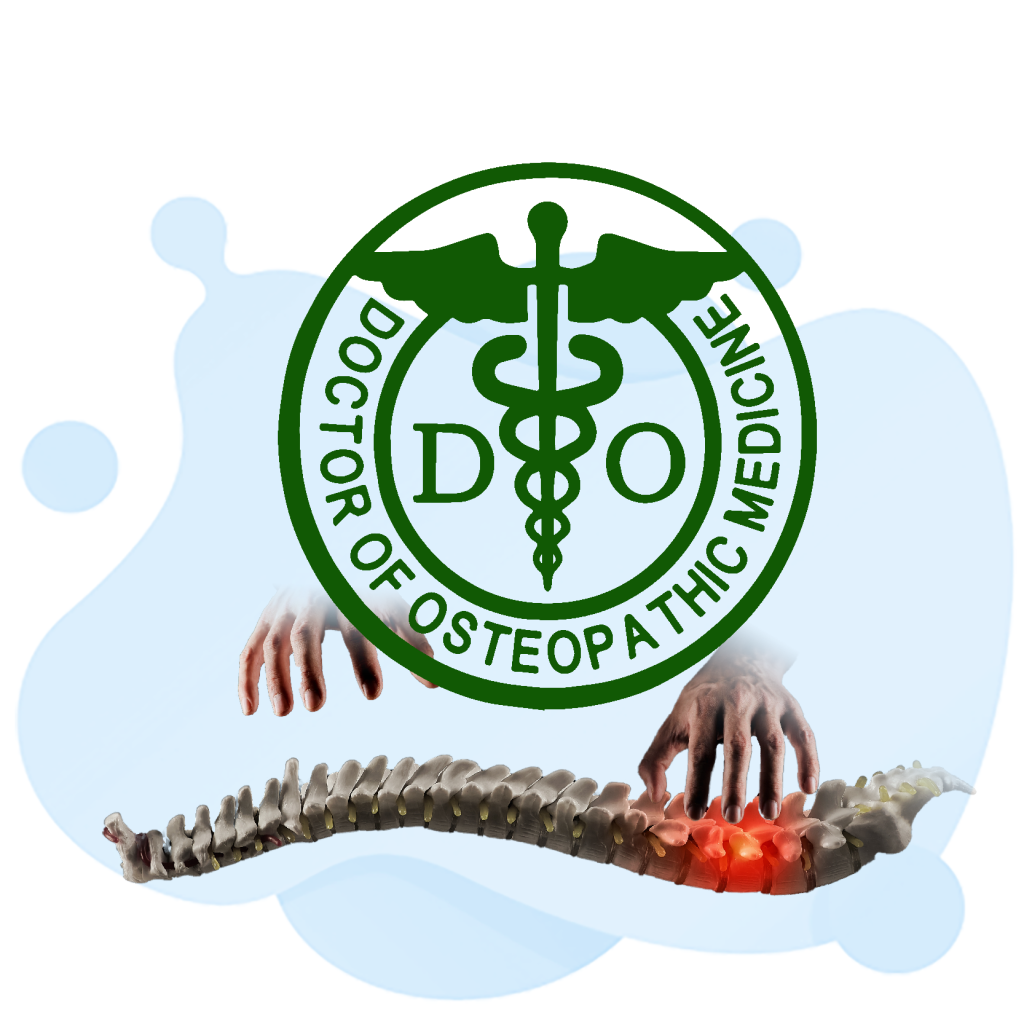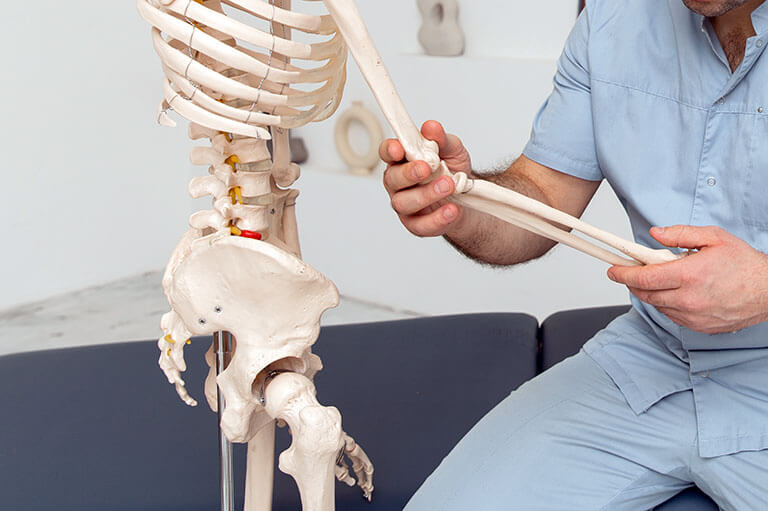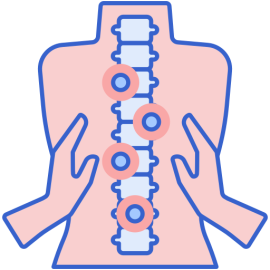Doctor of Osteopathic Medicine Degree 2023

According to the American Osteopathic Association, DOs make up 11% of all doctors in the United States. They offer a whole-person approach to medicine, and they partner with patients to help them stay healthy.
They are trained to look beyond your symptoms and understand how lifestyle factors impact your health. They are also able to use a variety of manual techniques.
Free Doctor of Osteopathic Medicine Practice Test Online
Doctor of Osteopathic Medicine
DOs take a whole-person approach to health care. This means they consider not only the physical needs of their patients, but also their mental and emotional well-being. This philosophy is based on the idea that all body systems are interconnected. DOs use a combination of hands-on treatments and modern medicine to address the root cause of the patient’s symptoms.
During their medical training, DOs learn about the musculoskeletal system of the body, which is made up of muscles, nerves and bones. This gives them a better understanding of how the different body systems work together to promote healing and balance. They also receive extensive training in osteopathic manipulative treatment, which involves using the physician’s hands to diagnose and treat disease and injuries.
In order to become a DO, you must graduate from a Commission on Osteopathic College Accreditation-accredited osteopathic school and complete an accredited residency program. In addition, you must pass the COMLEX-USA and USMLE exams. During the interview process, you will need to demonstrate your commitment to the principal tenets of osteopathic medicine. This will help convince admissions committees that you are genuinely interested in becoming a DO and not just seeking an easier path into medicine.
Doctor of Osteopathic Medicine Near Me
The Doctor of Osteopathic Medicine, or DO, is a fully licensed physician who practices the full range of modern medical science. This includes prescribing drugs, conducting tests, and performing surgery. DOs also practice a form of hands-on treatment known as osteopathic manipulation. This approach is focused on treating the whole person and focuses on the interaction between bones, muscles, and nerves.
In the past, osteopathic physicians were often looked down upon by their MD counterparts. But leaders in both sides of the profession say this tension has eased. In fact, many patients don’t notice a difference between an MD and a DO. They might like the physical manipulation DOs use to ease aches and pains, or the DOs’ focus on primary care.
There are more than 40 osteopathic schools in the United States. Most of these are located in rural areas. These schools are helping to fill the shortage of primary care doctors in rural America, which has long been a challenge. Most of the osteopathic schools participate in the same AMCAS and TMDSAS application services as other American allopathic medical programs.

Doctor of Osteopathic Medicine Salary
A Doctor of Osteopathic Medicine salary can vary based on location and experience. However, the average annual salary for DOs is $165,233. The most lucrative states for this occupation include Connecticut, Nevada, Hawaii, Massachusetts, and Tennessee. A person can become a DO by earning a bachelor’s degree and then going through a 4-year medical school program. During this time, the student will have to complete a number of prerequisites such as physics, biology, general and organic chemistry, and statistics or calculus.
Unlike MDs, DOs have a strong holistic philosophy and practice osteopathic manipulation, which involves hands-on diagnosis and treatment of the musculoskeletal system. They also have a long history of serving rural and underserved communities. While they use all the tools of modern medical care, DOs focus on preventive medicine and prioritize the body’s ability to heal itself.
DOs are licensed to practice in all 50 states and 65 countries worldwide. They can diagnose and treat patients, prescribe medications, and perform surgery. In addition, they must complete a residency and have extensive clinical experience.
Doctor of Osteopathic Medicine Schools
Doctors of osteopathic medicine, or DOs, offer a unique whole-person approach to patient care. They take a holistic view of the patient, taking into account their lifestyle, diet, stressors and family situation as well as their medical symptoms. This allows DOs to partner with patients and prioritize dignity in healthcare. DOs can be found in all medical specialties, including primary care, obstetrics, internal medicine and emergency medicine.

The osteopathic philosophy emphasizes that the body is self-regulating and has the inherent capacity for self-healing. It also recognizes that the body’s structure and function are reciprocally interrelated. These principles are reflected in the hands-on practice of osteopathic manipulation, or OMT, which is used to treat patients with musculoskeletal problems, such as sprains and back pain.
To get into osteopathic medical school, you will need to show your genuine interest in the profession and your commitment to its philosophical tenets. You will need to demonstrate this in your personal statement and during interviews. To do this, you will need to have relevant experiences to discuss. This includes shadowing or working with DO physicians, volunteering at a hospital, and working on research projects in the sciences or humanities.
Doctor of Osteopathic Medicine vs MD
While many people have heard of MD doctors, most are unaware that there are also DO doctors. MD doctors study allopathic medicine, which focuses on the diagnosis and treatment of diseases. DO doctors, on the other hand, study osteopathic medicine, which emphasizes the body’s ability to heal itself. This approach is based on the belief that symptoms are caused by a combination of factors, including lifestyle and stress.
In the United States, osteopathic doctors (DOs) can practice the full scope of modern medicine, including prescribing medication and performing surgery. They also complete osteopathic medical school and internships. In addition, osteopathic physicians have a whole-person philosophy that includes the connection between the nerves, muscles, and bones.
Some premed students ask whether it is possible to switch from an MD to a DO degree. However, this is not a common occurrence. Instead, premed students who want to become DOs should spend time shadowing DO physicians and obtaining letters of recommendation from them. This will help DO programs better understand your passion for osteopathic care.

Doctor of Osteopathic Medicine Programs
Doctors of osteopathic medicine (DOs) treat patients as whole persons, focusing on the body’s musculoskeletal system. They study the relationship of nerves, muscles and bones and how they affect each other, and they also learn a special technique called “osteopathic manipulative treatment,” which involves applying hands-on pressure to the bones and other soft tissues.
After graduating from medical school, osteopathic physicians go on to complete internships and residencies in their chosen specialty areas. This training takes three to nine years, after which they must pass state licensing exams and national boards.
To become a DO, you need at least a bachelor’s degree in science and good MCAT scores. You must also meet the academic requirements set by your chosen school. Generally, admission to DO schools is competitive. Admissions committees look for well-rounded students with achievements, character and dedication. If you’re considering a DO program, visit our Choose DO Explorer page for more information. You can also schedule a tour or attend recruiting events.
Application for Doctor of Osteopathic Medicine
Doctors of Osteopathic Medicine (DOs) are uniquely trained to treat patients as whole persons. They have a strong commitment to the osteopathic philosophy that encompasses mind, body and spirit. They take the time to listen to their patients and promote a lifetime of wellness. In addition, they focus on treating the underlying cause rather than just the symptoms of a disease.

To become a DO, you must complete a four-year undergraduate degree and score well on the Medical College Admission Test (MCAT). Afterwards, you must enroll in an osteopathic medical school. Unlike MD schools, many osteopathic medical schools have smaller enrollments and are more selective. For this reason, it is important to keep your overall GPA and MCAT scores high and take as many science and math courses as possible.
When applying to a DO program, you should emphasize your experience with osteopathic principles and practice. You should also write a strong personal statement that clearly explains your motivation for studying medicine. In addition, you should seek out letters of recommendation from DO physicians.
Doctor of Osteopathic Medicine Jobs
Doctors of Osteopathic Medicine (DO) use a whole-person approach to help patients prevent illness and injury. They are fully licensed physicians who practice in all medical specialties. They take into account a patient’s lifestyle, including environment and diet, and consider options to complement pharmaceutical treatment.
In addition to standard medical school training, DOs receive 300 to 500 hours of hands-on training in osteopathic manipulative treatment (OMT). This training increases their understanding of how one part of the body can affect another, reducing or eliminating the need for medication and encouraging the body’s natural ability to heal itself.
As a result, DOs have excellent observational and analytical skills. They are perceptive and detail-oriented, and are able to quickly diagnose illnesses and injuries. They also have strong written and verbal communication skills. In order to become a DO, students must complete four years of college and pass a medical board exam. During this time, they can shadow osteopathic doctors and volunteer in healthcare organizations to get hands-on experience. They can also attend recruiting events and visit osteopathic medical schools to learn more about their programs.
Doctor of Osteopathic Questions and Answers
Doctor of Osteopathic Medicine (DO or D.O., or in Australia DO USA) is a medical degree granted by 38 osteopathic medical schools in the United States. The Doctor of Osteopathy (DO) and Doctor of Medicine (MD) degrees are equivalent: a DO graduate may get licensed as a physician or surgeon and therefore has full medical and surgical practice rights in all 50 states. In DO programs around the United States, there were 168,701 osteopathic physicians and medical students. Osteopathic medicine developed historically from osteopathy, but it is now a different profession.
Osteopathic medicine is a “whole person” approach to medicine, treating the individual as a whole as opposed to treating only the symptoms. Doctors of Osteopathic Medicine (DOs) assist patients build attitudes and behaviors that not only battle disease, but also avoid it.
Expect to pursue four years of osteopathic medical training in classrooms and research labs following the completion of your undergraduate degree. Spend between three and nine years in internships and residencies, depending on the expertise chosen. Take and pass state and national licensing tests.
Those who wish to become doctors of osteopathic medicine (DO) should:
- Obtain a bachelor’s degree: Complete a bachelor’s degree program, preferably with a science or pre-medical emphasis.
- Take the MCAT: The MCAT is a prerequisite for admission to the majority of DO programs. You should prepare for it and take it.
- Conduct Research and Make a Decision on DO Programs: Look into accredited DO programs and make a decision on those that best suit your academic and professional objectives.
- Apply to DO Programs: Complete the application procedure, which often entails applying for AACOMAS or a specific school application.
- Attend DO School: If accepted, complete the four-year medical education program that emphasizes osteopathic principles and consists of classroom training and clinical rotations.
- Succeed at Licensing Examinations: Pass the COMLEX-USA Level 1 and Level 2 tests, as well as any state licensing exams necessary for practice.
- Finish Residency Training. Utilize the NRMP to apply for and complete a residency program in the specialty of your choice.
- Obtain State Licensure: Apply for a medical license in the state where you intend to practice, making careful adhere to the state’s particular regulations.
A Doctor of Osteopathic Medicine (DO) is a fully licensed and acknowledged physician. They are subjected to the same rigorous training and instruction as physicians having a Doctor of Medicine (MD) degree. DOs get additional training in osteopathic manipulative therapy (OMT), but their scope of practice, medical licensing, and capacity to offer comprehensive medical care are comparable to those of MDs. The distinction between DOs and MDs is disappearing as both professions collaborate and converge in the field of medicine to provide high-quality medical care and enhance patient outcomes.
Similarly to physicians with a Doctor of Medicine (MD) degree, a Doctor of Osteopathic Medicine (DO) can specialize in a variety of medical specialties. Family medicine, internal medicine, pediatrics, obstetrics and gynecology, surgery, emergency medicine, psychiatry, anesthesia, dermatology, and radiology are common specializations for DOs. These specializations encompass a broad spectrum of medical care, enabling DOs to give specialized treatment and care to patients of all ages and medical needs. If they choose a broader scope of practice, DOs also have the option of working as general practitioners or primary care physicians. Different medical institutions and residency programs may offer varying specialization opportunities.
The normal income range for an Osteopathic Physician in the United States is between $160,135 and $263,510, with a median salary of $203,690.
Similar to physicians with a Doctor of Medicine (MD) degree, a Doctor of Osteopathic Medicine (DO) is permitted to prescribe drugs. DOs receive the same medical education and training as MDs, allowing them to diagnose and treat a variety of illnesses. They have the knowledge and power to prescribe pharmaceuticals for the treatment of acute and chronic illnesses, the management of pain, and other medical needs. DOs must conform to any limits or requirements imposed by state laws and regulations on the prescription of restricted medications. However, as part of their entire medical practice, DOs possess the right to prescribe drugs.
Including surgical specializations, DOs can pursue all the same specialties as MDs. However, because the osteopathic (DO) philosophy emphasizes preventative and holistic medicine, it is more typical for osteopathic physicians to focus on primary care than surgery.
The steps to becoming a Doctor of Osteopathic Medicine (DO) include earning a bachelor’s degree with the required prerequisites, taking the Medical College Admission Test (MCAT), researching and selecting accredited DO programs, applying to those programs, enrolling in a four-year DO school, passing licensing exams like the COMLEX-USA, and completing residency training in your chosen specialty. This entails a demanding and thorough educational journey that gets you ready to practice medicine with an emphasis on osteopathic principles and osteopathic manipulative treatment (OMT).